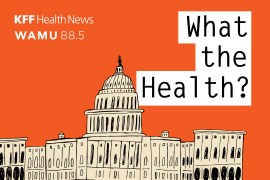Researchers say that by the end of the decade, 70 percent of people in the United States living with HIV will be older than 50. Thanks to advances in medicine, the diagnosis is no longer a death sentence.
“I’ve been fortunate to take care of some people with HIV for over 30 years,” said Melanie Thompson, a physician in Atlanta who said she is frequently told by patients, “You’re my longest relationship.”
But there’s a catch: People living with HIV are at increased risk for other health problems, such as diabetes, depression and heart disease.
As their health needs increase, more is required of the Ryan White HIV/AIDS Program, the comprehensive federal system that provides HIV primary medical care, medications and essential support services for low-income people living with the virus.
But core funding for the national network of clinics hasn’t changed much in the past decade.
According to a KFF analysis, inflation-adjusted spending has dropped from a peak in the early 2000s, despite the program serving tens of thousands of new patients.
Laura Cheever, who oversees the Ryan White program, said budget constraints make it hard to prioritize the needs of older people with HIV, especially when many people with the virus haven’t been diagnosed or aren’t receiving services at all.
“When a lot of people aren’t getting care, how do you decide where that next dollar is spent?” Cheever said.
President Biden’s budget request for fiscal 2025 asks for a funding bump of less than 1 percent for the program.
The latest infusion of funding for Ryan White — about $466 million since 2019 — came as part of a federal initiative to end the HIV epidemic by 2030.
But that program, launched by the Trump administration in 2019, was targeted by House Republicans last year in their push to slash the budget of the Centers for Disease Control and Prevention.
Their argument? The initiative, launched just a year before the global coronavirus pandemic drew resources and attention from other public health priorities, wasn’t meeting its goal to cut new HIV infections dramatically by 2030.
Around the same time, Republicans were threatening a different HIV program from a different GOP administration: the President’s Emergency Plan for AIDS Relief, or PEPFAR, launched by George W. Bush.
Republicans held up reauthorizing the program, which has helped millions around the world, over rumors its dollars funded abortions.
Advocates worry these cases signal a larger erosion in bipartisan support for HIV prevention and treatment that threatens to undermine years of progress lowering transmission and mortality rates — especially if older people with the virus don’t get adequate care.
“It’s tragic and shameful that elderly people with HIV have to go through what they’re going through without getting the proper attention that they deserve,” said Jules Levin, executive director of the National AIDS Treatment Advocacy Project, who, at age 74, has been living with HIV since the 1980s.
“This will be a disaster soon without a solution.”
This article is not available for syndication due to republishing restrictions. If you have questions about the availability of this or other content for republication, please contact NewsWeb@kff.org.






